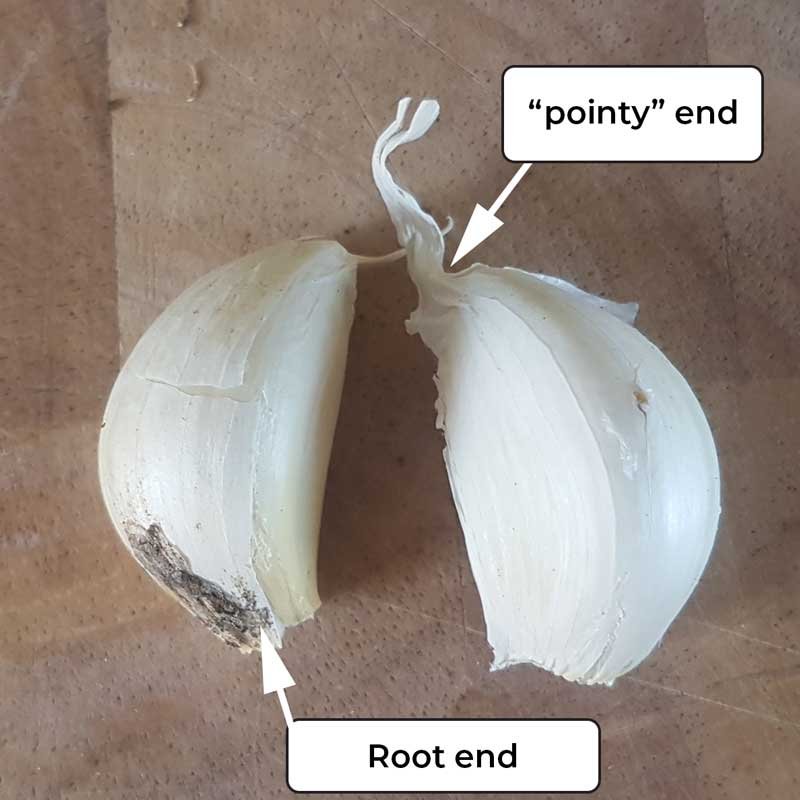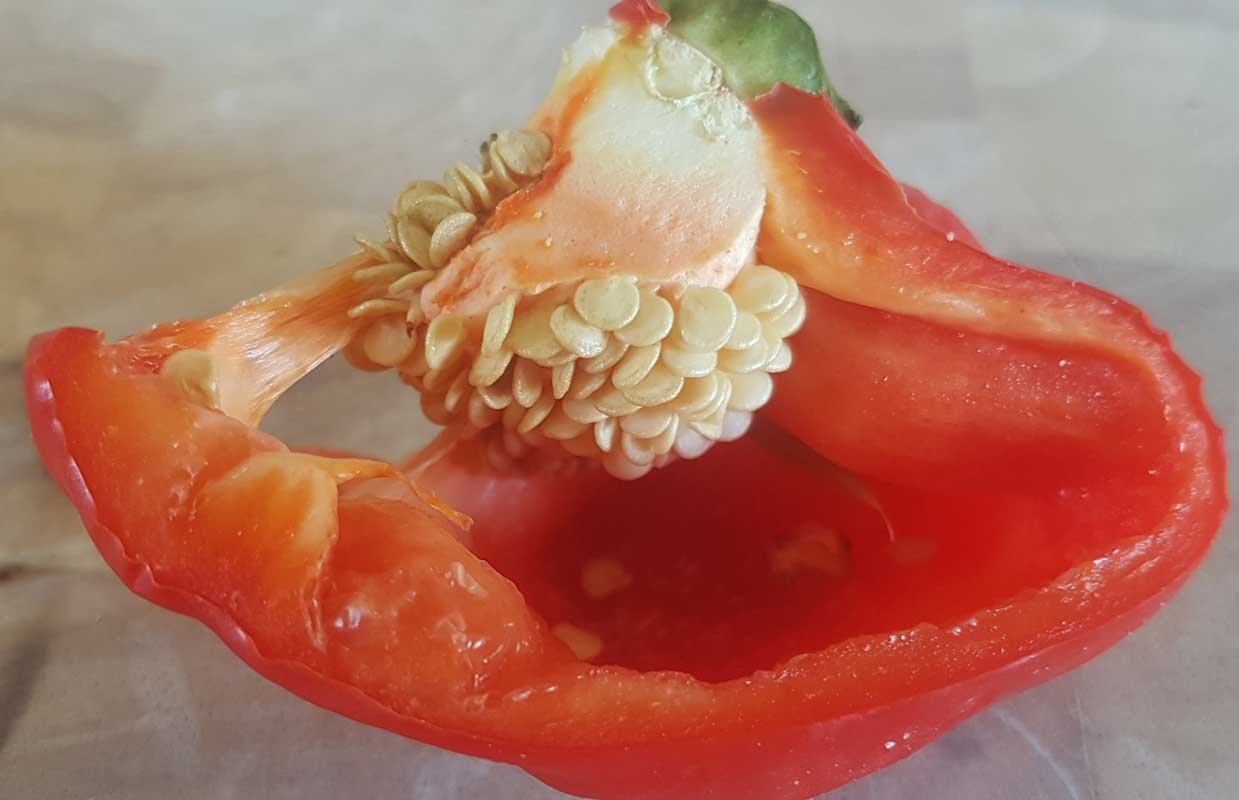In Level 4 lockdown, seed suppliers are classed as an essential service. You can buy seeds. Kings Seeds and Egmont Seeds are both open for business (albeit inundated with orders) as I type this. You can buy seedlings from Awapuni Nurseries as well.
But maybe you don’t have spare cash to buy seeds right now. The good news is that seeds are also a pretty common part of our diet. It’s fairly likely you can find a few in your kitchen right now. I found them in my pantry, my spice rack, and the vege drawer of my fridge.
You might think we’ve disabled the growth-potential of the seed somewhere in the food production chain – and sometimes we have. But many of the seeds in your kitchen produce perfectly edible plants. If it doesn’t work, it’s more likely they’ve been sitting in your spice rack or pantry for so long they’ve lost their viability.
I went through my own kitchen and picked out all the things I could grow from it. Depending on your tastes, you might have even more. All of them are available from supermarkets.
Some of these things will grow over winter or indoors, but many are summer crops. I don’t know what the world will look like in 6 months when it starts to feel like summer again. Maybe we’ll have some level of ‘normality’, but honestly, who can say? The likelihood is different depending on where you happen to be.
What I do know is that if you like to eat something and it has seeds, you can probably learn to grow it by then.
In the spice rack
My spice rack probably isn’t as varied as others, but I still found some things to grow. When you’re looking through here, you’re looking for unprocessed, whole seeds. Black peppercorns or ground coriander won’t work as they’re processed. But whole coriander, fennel, and mustard seed will work really well grown right now if you have them.
If your seeds aren’t covered here, research how to grow it before planting it. Many spices like a tropical environment and are difficult to grow in New Zealand.
Coriander
Now is a really great time in New Zealand to plant coriander. So if you have some whole coriander seeds in the pantry and like a bit of cilantro, get a handful into some soil and see what happens!
Coriander is totally happy in containers and will grow indoors and outdoors. It will take up to a month to germinate, so be patient. View my guide on growing coriander here.
Mustard
Mustard makes a good salad green when you eat the baby leaves – it’ll give your salad a bit of a punch. Grow thickly in a seed tray and harvest when it has 6-8 leaves.
In the garden, mustard can also be a good green manure crop. Sowing it for the purpose of putting it back into your soil will improve your soil’s ability to grow next season. More info on growing mustard here.
Fennel and dill
Dill makes a really great companion plant in the garden. It’s a good herb to have on hand when pickling, and its flowers attract beneficial insects.
Fennel, on the other hand, makes a terrible companion plant. It’s a bit of a nigel no-mates and actively deters the growth of nearby plants. The beneficial insects are keen on its flowers, but fennel tends to enjoy its own company. Of course, fennel can produce fennel bulbs, which are delicious. The entire plant is edible and it’s pretty happy in marginal land and poor soils.
Both will grow in containers over winter.
Whole chili/chili flakes
If you have whole chilies or chili flakes, you probably have chili seeds. Put some aside to grow in spring, or if you have a very warm and sunny indoor spot, you could try growing indoors in pots over winter.
In the pantry
I found quite a lot to grow in my pantry. Like the spice rack, I’m looking for seeds. But unlike the seed rack, sometimes the ‘seeds’ are a bit harder to recognise.
Dried lentils, dried beans, popcorn, sesame seeds, whole raw peanuts, and dried chickpeas
All of these are seeds. You’re eating a seed. They’re all summer plants, so maybe keep a couple of dozen aside in case you need them.
Potato
Normally I would tell you to buy certified seed potatoes, but this is one thing I’m not sure how I’d source in Level 4, so needs must. The ideal time to plant potatoes is after the frosts have past, but in Northland I’ve planted starting in July.
Depending on the variety, they take between 70 and 150 days to mature. Agria will take 90-120. Potatoes totally grow in containers too. So hold onto the ones that are wrinkled with eyes and roots to grow more later. Read my potato planting guide here.


Kūmara
If you have a kūmara in the pantry, you can plant it and get fresh greens now. In summer, you can also grow more kūmara. Both the kūmara shown above were grown from a $1.60 supermarket kūmara. The best ones to use are the ones right at the back of the pantry with sprouts, but a fresh one will do too.
For fresh greens now, take a 2 litre icecream container. Drill, or use a nail to put some holes in the bottom. Half-fill it with a mix of sand and potting mix (whatever you have will also probably work fine). Place half your kūmara in the soil, with the shoots facing up (if you have them). Half the kūmara should be above the soil. Water every 2-3 days.
The leaves of the kūmara shoots are edible as a salad green. When grown on a sunny windowsill, they seem to grow almost infinitely. The one shown above has been going for 9 months now and doesn’t look like it’s going to slow down any time soon. They’re also a fairly low maintenance houseplant and only need watering every 3-4 days. If we’re still at this in spring, I’ll show you how to grow more kūmara from it too.
Garlic
Every clove of fresh garlic has the potential to become an entire bulb if given some soil and time. Garlic can go in the ground between now and late June, and will grow in containers. It takes about 6 months to complete its growth cycle. Prepare your soil as best you can. Some lime, blood and bone, compost, or manure are all good additives. Save the largest cloves from around the outside of the bulb for planting. Eat the annoying little cloves in the middle. Plant the entire clove (skin on), with the pointy end up, about 2cm under the surface of the soil. Keep your rows 20-30cm apart to help prevent rust later on in the season.
Onions
If you plant an onion, you will not get lots of onions like you do with garlic. But if you happen to have one that’s sprouted in the pantry, planting it could still be a good idea. Bury the bottom two-thirds of the onion (skin on) into the soil. Make sure the root-end faces down. Keep the top-third above the ground.
After about 4 months you will get a pretty flower. That flower will bring the bees to your yard. Over the course of a couple of months, it will also grow thousands of onion seeds. You can dry and store those seeds to sow where and when you’re ready. Or if you plant the onion in the center of your garden, you can just weed the ground around it and let it self-seed. The seed will take another 6 months to produce an onion, so this is a long-term project.
Pumpkin
I grabbed a small whole pumpkin on my last trip to a green grocer because I know they can last all winter if they’re not cut. It’s part of my emergency food plan.
If you have a whole or partial fresh pumpkin, scoop out the seeds and put them into a jar. Half-fill the jar with water and loosely put the lid on. The seeds will begin to ferment. Shake the jar once a day for two days, then pour out into a colander and rinse.
The pulp around the seeds should now come off cleanly. Dry the seeds in one layer on a flat tray in a warm place (hot water cupboard, or on top of the fridge will do). Store in an envelope or ziplock bag in a dark cool place until spring.
Pumpkin seeds
“Pumpkin seeds” (the kind you purchase as whole seeds and eat) may also grow a pumpkin, but they will grow a different kind of pumpkin. The pumpkin they grow will be one that is harvested for its seeds, rather than its flesh. These are called ‘hulless’ seeds as they do not have the thick outer layer that ‘edible’ pumpkins do.
In the fridge
Finally, there’s a few tricks to growing stuff you’ll find in your vege bin. From here, you can actually re-grow some vegetables. Others will provide you seeds for next summer.
Leeks, spring onions, and whole celery
Save the root-end of the vegetable when using it. You can re-grow an entirely new one from this single piece. Simply place root-down in a glass of water on the windowsill.
Change the water at least weekly, but more often is better. They’ll begin to re-grow in days.
Capsicum and tomato
The fresh, ripe produce of these plants both contain fresh, mature seed. Capsicum are really easy to save – just leave the center-piece with the seeds on a saucer in a warm place to dry out. In a week or two, they’ll fall off cleanly and can be saved for spring. Store in an envelope or zip-loc bag dark, dry, cool place.
Tomatoes are another plant that is going to do best from spring, so you’ll need to save the seed. You’ll need to remove the pulp from the seed or it’ll inhibit the growth. Instructions for saving tomato seeds can be found here.

Carrots
Did you ever grow a bushy carrot top from the top end of a carrot in school? You can do it again today, but much like onions, you’re going to get carrot flowers, and then carrot seeds, rather than a brand new carrot.
That said, carrot flowers will attract beneficial insects and pollinators to your garden. Carrots and onions grow well together, so you could plant them side-by-side and have a self-seeded carrot and onion bed this time next year.
A note on fruit
After all this, you might be keen to start an avocado, apple, or lemon tree from seed too. They may certainly grow, but you won’t always get a viable tree as a result. While this is really fun to experiment with, it’s going to take many years. And I’d recommend you do some research on how these trees grow from seed first.Pandemic Growing Guides
During the COVID-19 pandemic and lockdown, I'll be writing a pandemic-themed growing blog every week. Here's a handy list of what's been published so far if you'd like to catch up:
More sowing guides
I've created a few sowing and growing guides like this one for different plants and situations. If this one hasn't answered your question, maybe one of these will:



